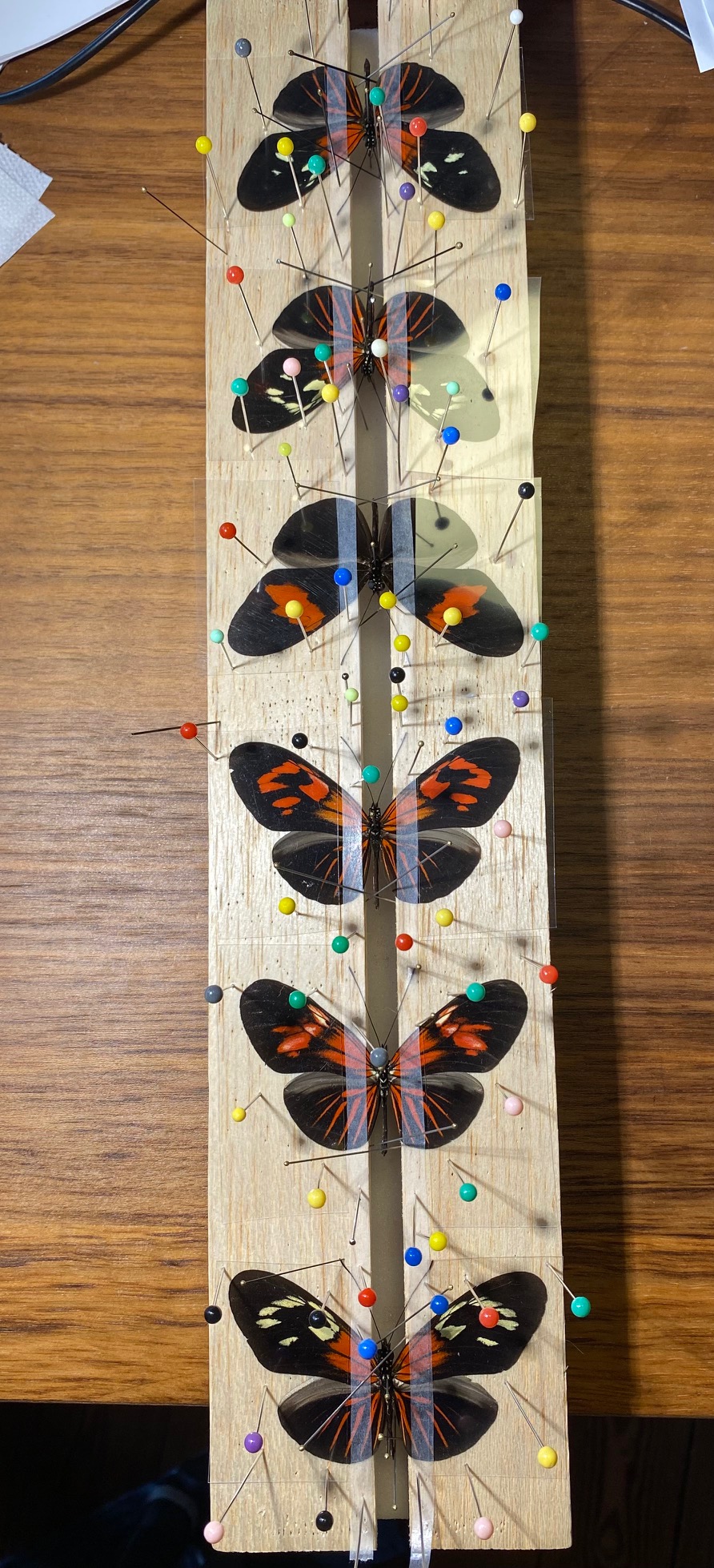Page 4 of 4
Re: So, what's on your spreading board ?
Posted: Thu Nov 14, 2024 12:50 pm
by Chuck
eurytides wrote: Wed Nov 13, 2024 10:12 pm
Let me tell you Chuck, my wife was not happy I bought that tree. We seriously don’t have room for it in the yard. She said I could keep it so long as I pruned it every year and made sure it didn’t grow any taller…
You know, you could have driven down here and gone home with as many as you want. My back yard is loaded with Tulip Tree.
Re: So, what's on your spreading board ?
Posted: Thu Nov 14, 2024 7:14 pm
by eurytides
That’s going to make my wife less happy, not more…
Re: So, what's on your spreading board ?
Posted: Thu Nov 14, 2024 10:47 pm
by Chuck
eurytides wrote: Thu Nov 14, 2024 7:14 pm
That’s going to make my wife less happy, not more…
This is killin' me. I keep returning to read it, and laugh.
Re: So, what's on your spreading board ?
Posted: Sun Nov 17, 2024 5:11 pm
by martellat0
Here's a few Sphingids of mine, fresh off the board -
Hippotion celerio, raised from larvae that had been ravaging some potted Caladiums in my garden. While in captivity, I fed them
Alocasia macrorrhizos along with the
Caladium spp. I found them on, the latter of which they seemed to prefer.

I have kept data on the dates of collection, pupation, and eclosion for each individual. They're currently awaiting labelling along with their pupal cases, which I have also kept and pinned.

Here are photos of the caterpillars in various instars - note the dark morph.





And here's some follow-ups to earlier posts I have made in this thread:
 Episteme darocana
Episteme darocana, male (top) along with another female individual that I was able to collect some time after the male.

A female
Troides rhadamantus in perfect condition.

A female Vindula dejone - my first ever - and in excellent condition.
Re: So, what's on your spreading board ?
Posted: Sun Nov 17, 2024 9:06 pm
by Trehopr1
My compliments in doing such a nice job with the "setting" of your specimens. Nice that you document pertinent information regarding your bred specimens.

Re: So, what's on your spreading board ?
Posted: Thu Nov 21, 2024 8:39 pm
by mothman55
Re: So, what's on your spreading board ?
Posted: Fri Mar 28, 2025 9:30 am
by wollastoni
Spreading some
Heliconius erato I caught in French Guiana in 2021.

- IMG_1010.jpg (593.08 KiB) Viewed 296 times
French Guiana is a contact zone between several ssp of
Heliconius erato and
Heliconius melpomene. They copy each other and ssp are mixing themselves, creating fascinating forms. You can spend your whole life studying the hundreds of forms you may find.
These 6 specimens of
erato show you some nice variations.
If you want to know more about all these forms, this book is great :
https://marketplace.insectnet.com/item/ ... riodinidae
And the cover of this book is a great explanations on how various forms are triggered with two very different form ready to mix their genes !

Re: So, what's on your spreading board ?
Posted: Fri Mar 28, 2025 1:47 pm
by Paul K
Heliconius is one of my favourite genus.
I think of going once again to France Guiana for butterfly collecting. Which month of the year is most productive there? In 2004 I was on moth collecting trip in February but butterflies were rather few that time.
Re: So, what's on your spreading board ?
Posted: Fri Mar 28, 2025 2:26 pm
by wollastoni
Entomologists target the dry season to collect butterflies : the dry season is from July to November. I will myself go there next November.
There is also a short dry season in March which is said to be very good, it lasts only 2 weeks.
These Heliconius were caught in September & October 2021.
There are butterflies also in the wet season... but if it rains constantly, you won't be able to go outside and catch them. That's why most people avoid the wet season.
Here are the rainfall per month (last line) :

- pluviometrie cayenne.png (33.34 KiB) Viewed 263 times
Last year was extremely dry (end of El Nino) so if El Nina starts this year, it should be excellent for butterflies. This said the climate is very strange in French Guiana (very dry) in these last years due to strong deforestation in the rest of Amazonia (Brazil, Peru...) destroying the climate of the whole area.










